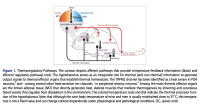J
jb116
Guest
That might be looking at metabolism in a vacuum. An analogy is coconut oil inhibiting DHT, but its overall effects as a food outweigh that.Read Travis's post's above
I wouldn't call CO "anti-metabolic." At the same token, considering total effect, certain substances in their "slowing" effect might also be a check and balance
to things that "speed" up the system. Perhaps the more beneficial hormonal effects in taking a short break from caffeine for example. You can't have one without the other.
The whole aspect of sleep induction maybe is part of its benefit actually, especially for exhausted organisms running on stress.
Edit: @HDD posted some good, relevant quotes and info to my post

